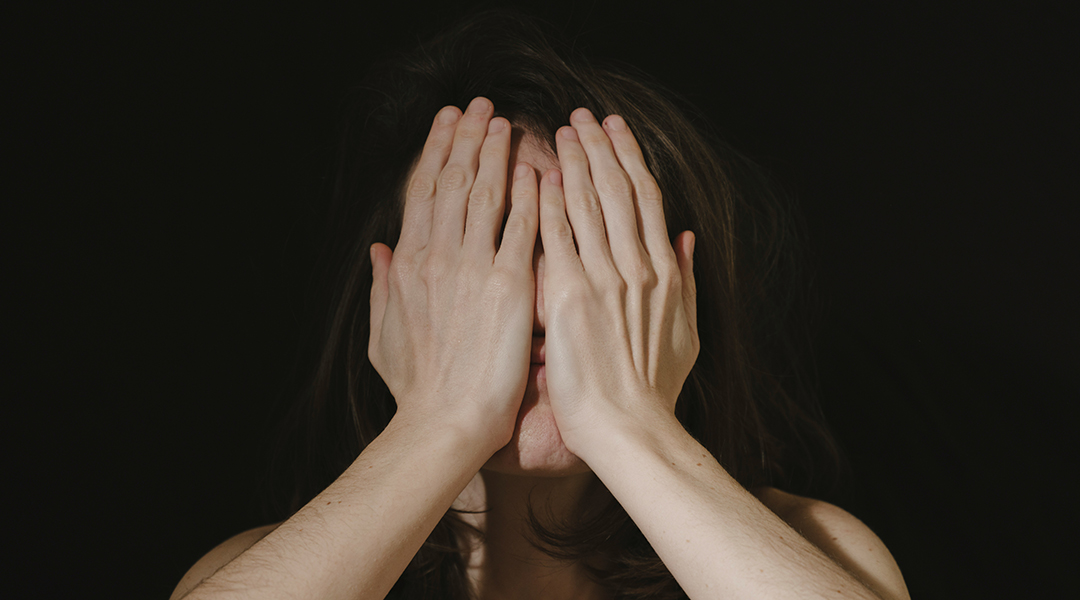We unconsciously touch our faces up to 800 times a day, with the T-zone — forehead, nose, and chin — receiving the most attention. But why do we tend to touch this area so frequently? A recent study investigated whether the distribution of facial hair and density of the skin’s sensory cells might explain this behavior.
This subconscious act has been tied in some way to working memory and emotions, and consciously refraining from such touch is nigh impossible. But it turns out that understanding why we touch the T-zone more than any other part of our bodies is important, as frequent contact with this area can contribute to the spread of diseases through the soft tissues of the eyes, nose, and mouth.
Several sensory cells called mechanoreceptors surround each vellus hair — the short, thin hair that covers most of the body. The number of vellus hairs could help deduce the number of mechanoreceptors present in the skin.
“These sensors make it possible for us to consciously perceive the slightest deformation or touch of a single hair,” said Martin Grunwald, researcher at the Haptic Research Laboratory, University of Leipzig in Germany, in an email. “They are so sensitive that we can even feel the wind as it moves across the skin.” As with any fuzzy area of the body, the face is highly innervated, with mechanoreceptors in skin responding to touch and pressure, among other stimuli.
Grunwald and his colleagues wondered if the densities of vellus hair and mechanoreceptors were connected to how often we touch our faces. They suspected that the greater amount of mechanoreceptors in facial skin may explain why.
Teasing out the problem
Using microscopy, the researchers were able to count facial hairs across 40 segments of facial skin in 30 male and female participants, all of whom were right-handed.
For both sexes, the frequency of vellus hair was greater in the T-zone than on either side of the face, including the upper forehead and cheek down to the jaw. This difference remained, even after the density of beard hair was taken into account, though the density of facial hair — including both vellus and facial hairs — on the two sides of the face was surprisingly lower in men than women.
However, the researchers noted some limitations to using microscopy alone to infer the number of mechanoreceptors. “Since we only have images, not skin samples, we can estimate the mechanoreceptors based on the vellus hairs, but we don’t know if other receptor types in facial skin are also more densely packed in the T-zone compared to other regions,” explained Grunwald. “This is a question we’ll need to address in the next phase, but it would require tissue samples, which poses both ethical and financial challenges.”
To accurately evaluate the frequency of spontaneously touching the face, the researchers carried out a working memory experiment. Other research on this form of self-touching has found that detailed experiments are needed to accurately assess the frequency of these touches.
Participants were shown different words, required to memorize them regardless of any distractions, and then asked to write the words from memory. All along, researchers measure the electrical activity in the brain and muscle, as well as recoded video footage of any movements and touches. In 66 people, the frequency of spontaneous facial self-touches were measured on the same 40 measuring spots, as in the previous experiment.
More cells equals more touch
The researchers found that people touched their T-zone more often than either side of their face. This area had more vellus hairs, and likely more innervation compared to the other areas.
While there were no differences in the frequency of these touches between men and women, people were more likely to touch the right side of their face compared to the left side.
“One hypothesis is that touch stimuli in this region are registered particularly quickly and accurately because there is a higher density of mechanoreceptors there. We assume that, at the moment the [person] senses a need for facial self-touches, the stimulus must reach the brain very quickly,” added Grunwald. “This might explain why the face, in general, is more frequently self-touched, as sensory signals from this area go directly to the brain without additional processing through the spinal cord.”
Various groups of researchers are working on finding connections between fear, insecurity, dishonesty, and the frequency of such facial touches. For now, the underlying reasons for why we can’t stop touching our faces remain obscure.
“Spontaneous human behavior is biologically and psychologically important for the organism; otherwise, such behavior wouldn’t occur,” said Grunwald. “There’s general agreement today that spontaneous facial self-touches are a regulatory process for something. However, it’s still unclear exactly what is being regulated. We talk about memory and emotional regulation, but ultimately, these are still just hypotheses.”
Reference: Martin Grunwald, et al., Number of Facial Hair Corresponds to Frequency of Spontaneous Face-Touch in Humans, Advanced Biology (2024). DOI: 10.1002/adbi.202400243
Feature image credit: engin akyurt on Unsplash

















